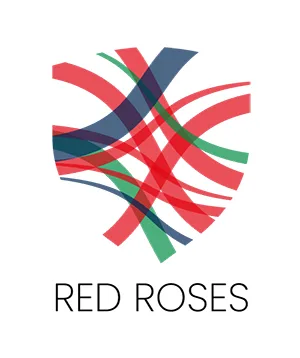



The RED ROSES project, initiated in March 2023 and coordinated by the French Red Cross, aims to improve the management of transboundary disasters between France and Italy.
Co-financed by the European Commission (DG ECHO) within the framework of the Track 2 2022 call for projects, it focused on the Suse and Roya valleys. The project consortium included partners from various sectors, such as the Bureau de recherches géologiques et minières (BRGM), Université Paris Dauphine, the Italian National Research Council (CNR) and the Italian Red Cross.
RED ROSES has developed digital tools to strengthen cross-border cooperation and optimise crisis management:
• Spatial Data Infrastructure (SDI): platform integrating standardized databases and a voluntareed geographic information system (VGI) for real-time collection via the KOBO tool.
• Decision Support System (DSS): A tool to support operational decision-making, tested during an exercise simulating a Mediterranean hurricane.
Participants shared how RED ROSES tools have been applied in real-world scenarios. A key example is a large-scale field exercise in eastern France (Alpes Maritimes) and northwestern Italy (Piedmont, Liguria and Lombardy), where civil protection teams and volunteers tested the tools in a simulated emergency situation. This exercise focused on a flood scenario triggered by a rare hurricane in the Mediterranean (Medicane).
During the final conference (February 2025) for the presentation of achievements, several challenges were identified:
• Data integration: harmonization and access to cross-border data.
• Governance: clarification of the roles and responsibilities of the actors involved.
• Sustainability: guaranteeing the durability of tools in the face of economic and technological challenges.
The project partners, in particular the French and Italian Red Crosses, are committed to integrating these tools into their national risk management strategies. In addition, the extension of the project to other types of disasters (earthquakes, tsunamis) and the use of artificial intelligence are envisaged to strengthen the responsiveness of interventions. The RED ROSES project demonstrated the importance of cross-border cooperation and technological innovation in disaster management. Thanks to the progress made, the tools developed could be adopted on a larger scale in Europe, thus contributing to a better resilience of territories to future crises.
Website : Reducing disaster risks through data-driven collaboration | UCP Knowledge Network
_________________________________
Le projet RED ROSES, initié en mars 2023 et coordonné par la Croix-Rouge française, vise à améliorer la gestion des catastrophes transfrontalières entre la France et l'Italie. Cofinancé par la Commission européenne (DG ECHO) dans le cadre de l’appel à projets Track 2 2022, il s'est concentré sur les vallées de Suse et de la Roya. Le consortium du projet comprenait des partenaires de divers secteurs, tels que le Bureau de recherches géologiques et minières (BRGM), l’Université Paris Dauphine, le Conseil national italien de la recherche (CNR) et la Croix-Rouge italienne.
RED ROSES a développé des outils numériques pour renforcer la coopération transfrontalière et optimiser la gestion des crises :
• Infrastructure de données spatiales (IDS) : plateforme intégrant des bases de données standardisées et un système d’information géographique volontaire (VGI) pour une collecte en temps réel via l’outil KOBO.
• Système d’aide à la décision (SAD) : outil de soutien à la prise de décision opérationnelle, testé lors d’un exercice simulant un ouragan méditerranéen.
Les participants ont partagé comment les outils RED ROSES ont été appliqués dans des scénarios réels. Un exemple clé est un exercice de terrain à grande échelle dans l’est de la France (Alpes Maritimes) et le nord-ouest de l’Italie (Piémont, Ligurie et Lombardie), où des équipes de protection civile et des volontaires ont testé les outils dans une situation d’urgence simulée. Cet exercice s’est concentré sur un scénario d’inondation déclenché par un ouragan rare en Méditerranée (Medicane).
Lors de la conférence finale (février 2025) pour la présentation des réalisations, plusieurs défis ont été identifiés :
• Intégration des données : harmonisation et accès aux données transfrontalières.
• Gouvernance : clarification des rôles et responsabilités des acteurs impliqués.
• Durabilité : garantir la pérennité des outils face aux enjeux économiques et technologiques.
Les partenaires du projet, notamment les Croix-Rouge française et italienne, s'engagent à intégrer ces outils dans leurs stratégies nationales de gestion des risques. De plus, l’extension du projet à d’autres types de catastrophes (séismes, tsunamis) et l’usage de l’intelligence artificielle sont envisagés pour renforcer la réactivité des interventions. Le projet RED ROSES a démontré l’importance de la coopération transfrontalière et de l’innovation technologique dans la gestion des catastrophes. Grâce aux avancées réalisées, les outils développés pourraient être adoptés à plus grande échelle en Europe, contribuant ainsi à une meilleure résilience des territoires face aux crises futures.
Site internet : Projet RED ROSES | Croix-Rouge française
.